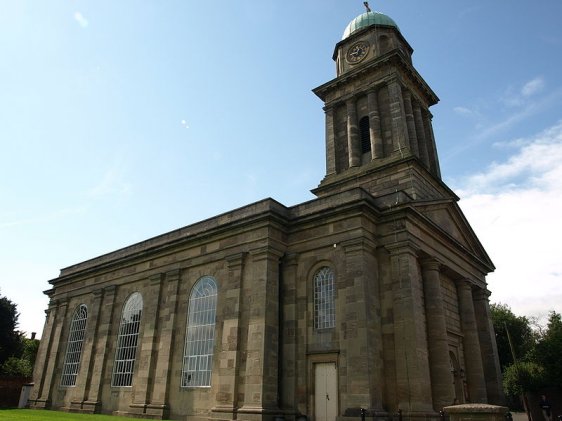Bridgnorth is a town in the Severn Valley, in Shropshire, England. The town comprises two sections separated by the River Severn. High town is on the right bank of the river while Low Town on the left. Together, Bridgnorth has a population of some 12,500 people (2012 estimate).
 Bridgnorth, Shropshire, England: Source: https://commons.wikimedia.org/wiki/File:Bridgnorth_-_Old_Market_Hall_-_geograph.org.uk_-_1323006.jpg
Bridgnorth, Shropshire, England: Source: https://commons.wikimedia.org/wiki/File:Bridgnorth_-_Old_Market_Hall_-_geograph.org.uk_-_1323006.jpgAuthor: Ian Slater

The earliest mention of Bridgnorth was during the Danes period, in AD 895, when it was called Cwatbridge. Its name refers to a new bridge that was built to the north of an earlier bridge at Quatford. Following Norman Conquest, the manor was granted by William the Conqueror to Roger de Montgomerie. The town known as Bridgnorth only came about in 1101, when de Montgomerie's son, Robert de Belesme, relocated north of Quatford, establishing a castle and church on a new site and give it the present name.
Down the centuries various monarchs granted Bridgnorth various privileges, among them the right to hold fairs. Today it is a charming, well-preserved small town with many historic buildings.
Visiting Bridgnorth
From London, take the M1 motorway to Junction 19, then continue west on the M6 motorway to Birmingham. From Birmingham, head west on the A456 road, continuing on the A458 road until you arrive in Bridgnorth. Church of St Mary Magdalene, Bridgnorth: Source: https://commons.wikimedia.org/wiki/File:StMaryMagdaleneBridgnorth.JPG
Church of St Mary Magdalene, Bridgnorth: Source: https://commons.wikimedia.org/wiki/File:StMaryMagdaleneBridgnorth.JPGAuthor: Andrewabbott

Places of Interest in Bridgnorth
- Bishop Percys House: Historic house built in 1580 and now a Grade I listed building.
- Castle Hill Railway: Funicular linking High Town to Low Town. It is also the steepest and only railway of its type in Britain.
- Church of St Mary Magdalene: Anglican parish church built in the classical style in the late 18th century, located in High Town.
- Daniel's Mill: Watermill on the River Severn a short distance from Bridgnorth town center.
- St Leonard's Church, Bridgnorth: Redundant Anglican church, today designated by English Heritage as a Grade II* listed building and managed by the Churches Conservation Trust.
 Latest updates on Penang Travel Tips
Latest updates on Penang Travel Tips

Copyright © 2003-2025 Timothy Tye. All Rights Reserved.

 Go Back
Go Back